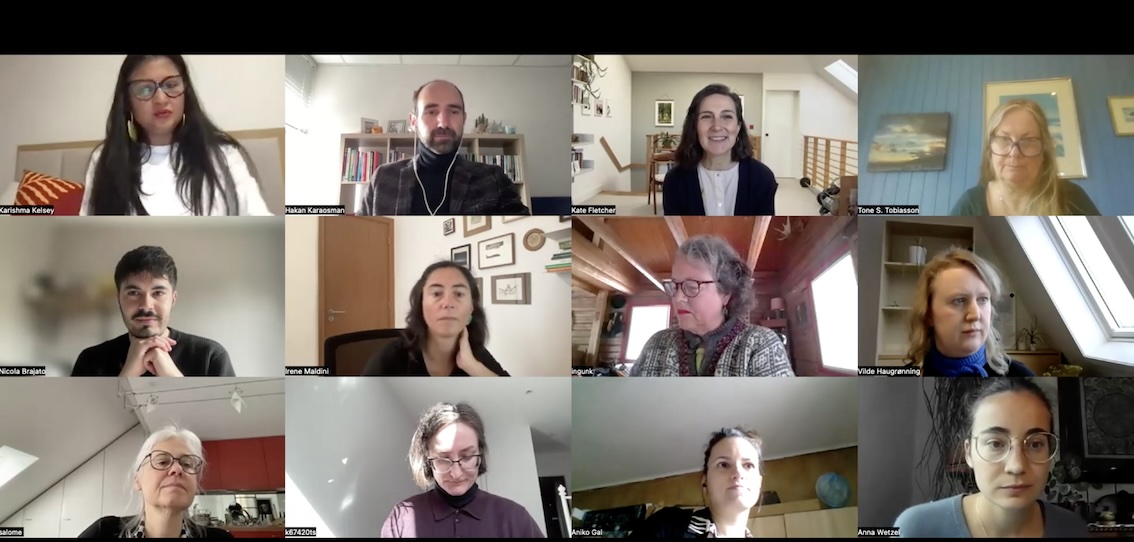Wardrobe Methods webinar opens up the field

On 17th April 2024, UCRF (Union of Concerned Researchers in Fashion) hosted a Wardrobe Methods Event in conjunction with the CHANGE research project to explore a way of researching the contents and dynamics of wardrobes.
78 had registered for the event, and 41 attended the webinar on Wardrobe Methods, which is about the use phase in the lives of clothing and the practices that go on there. This has long been seen as a way to break apart the monolithic understanding of ‘use’ and ‘consumption’ that industry and sustainability initiatives often promote. In the attendees at the live meeting, at least 15 different mother tongues spoken: Spanish, Ukrainian, Russian, Dutch, Hungarian, English, Portuguese, Swiss German, Danish, Turkish, Hindi, Italian, German, Polish, Norwegian.
The event hosted by Professor Kate Fletcher and Karishma Kelsey from the UCRF Board was facilitated by a talk from Professor Ingun Grimstad Klepp which gave a round-up of the history of the set of methods, along with current uses, also in policy-work. Here Klepp briefly touched on the new method developed by Consumption Research Norway SIFO called Waste Audit Interviews. This is part of SIFO’s ongoing work on addressing the short-comings of EU’s Textile Strategy, where ‘durability’ and ‘repairability’ are seen as the beacons of a long life for apparel.
The event’s goal was to explore ways to extend wardrobe methods further, including in more diverse ways. The talk was followed by a lively discussion and breakout-sessions. See the whole webinar by clicking here.
The discussions raised many intriguing propositions and development for Wardrobe Methods, a selection from the break-out rooms is summarized here:
- Using wardrobe methods to help show the variety of understandings about key terminology related to textile qualities and descriptions, e.g. ‘quality’.
- Potential ethnographic study of indigenous Mayan textile artisans in Guatemala, who traditionally weave their own capsule wardrobe but now supplement it with western clothing items.
- Using wardrobe studies to investigate ageing and clothing. Look at how the studies can be a guide and pathway to other ways of being.
- Taking a lifecycle perspective: look at the wardrobe as history.
- Deploying wardrobe methods to investigate identity and identity change: for example, gender, sexuality, everyday life, menopause, pregnancy, biopolitics and non-conforming men.
- Investigating how digital apps can go beyond quantification of wardrobe – learn about user preferences, emotional durability, reasons for why clothes fall out of use.
- Exploring the assumption that fit translates into longevity of use.
- Using wardrobe methods as a way to create behaviour change – increasing engagement and awareness among people for example in power positions and politics.
- Qualitative and quantitative data are important. Using hybrid wardrobe methods to investigate items sent for repair or taken to clothing swaps at work places, are good ways to follow their story and give valuable data for the use phase.
- Awareness raising power of wardrobe studies, how can we use wardrobe studies in developing new business methods that are not growth oriented?
- Comparing with post-Soviet countries, specifically in smaller villages in the country-side to open up bigger cultural context.
The participants were encouraged to contribute with their own related research, and we are looking forward to seeing these and adding them to the Wardrobe Studies Library.